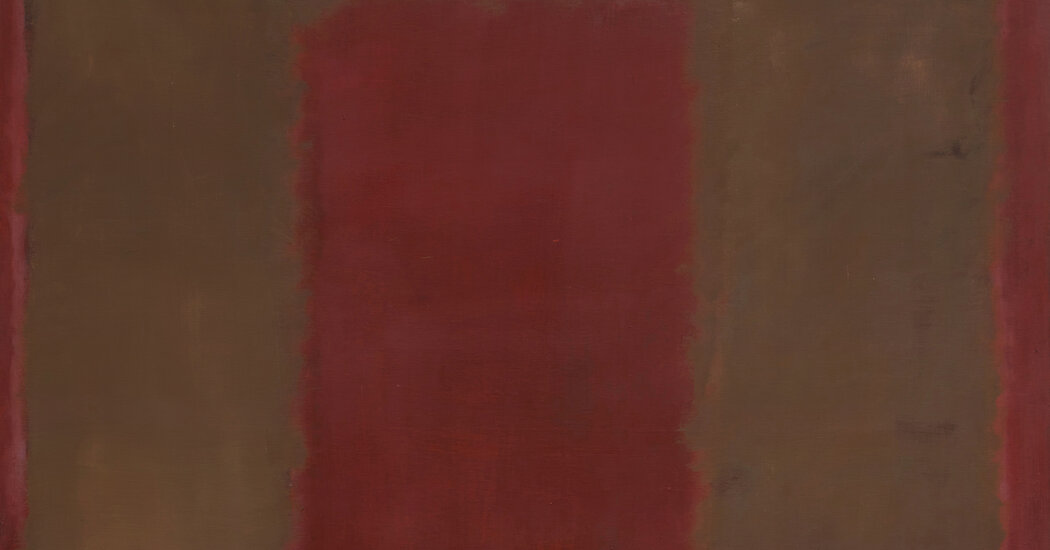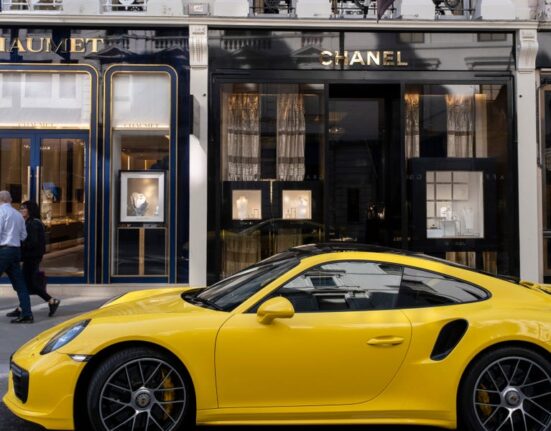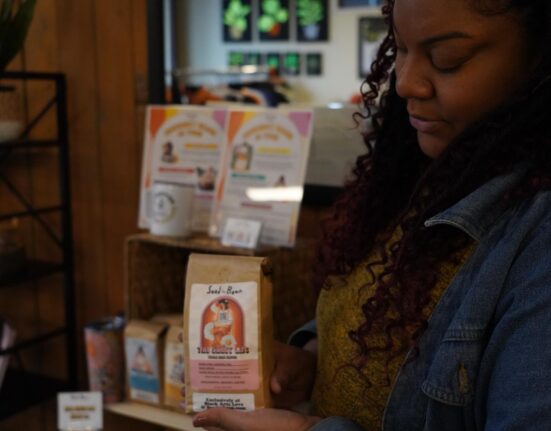A dip, or a trough, or just a blip? Traders and collectors were left asking this question after two weeks of sales in New York stress-tested the top end of the auction market for modern and contemporary art.
Headlined by Sotheby’s sale of the collection of the art patron Emily Fisher Landau, which grossed $424.7 million with fees, this latest bellwether November series — with 14 live auctions at Sotheby’s, Christie’s and Phillips — took place against an unpromising backdrop of high interest rates, slowing economic growth in China and war raging in the Middle East.
“We were expecting a very difficult couple of weeks,” said Philip Hoffman, chief executive of the Fine Art Group, an international art advisory company.
“Apart from a very few lots, there weren’t many second bidders,” Hoffman said, commentating on a first week dominated by the Fisher Landau sale. “There were no sparks. But Sotheby’s and Christie’s are still managing to sell paintings for very high prices.”
As is almost always the case now with auctions of major single-owner collections, Sotheby’s secured the Fisher Landau consignment by guaranteeing the sellers an overall minimum price. The auction house offloaded as much as possible of this financial risk to third-party “irrevocable bidders,” who have a first option to buy the work, usually on advantageous terms, or can share the upside if the bidding continues. Picasso’s 1932 painting “Femme à la montre,” the star lot of the Fisher Landau collection, was one of 24 lots in the Nov. 9 evening sale backed by irrevocable bids. Typifying the cautious buying that night, this sold for a low estimate of $139.4 million with fees, albeit the highest price of the season, to a single telephone bid from an anonymous client. It was just $1 million above the guarantee.
A further seven lots in that sale were guaranteed by Sotheby’s. All 31 works sold, raising $406.4 million against an estimate range of $344.5 million to $430 million, but among the auction house guarantees was a somber 1958 Mark Rothko abstract with a low estimate of $30 million. This was knocked down to one bid of $22.2 million, incurring Sotheby’s a substantial loss, but preserving the prestige of a 100 percent selling rate.
“While in art market terms it was a success, in business terms it was an expensive investment,” Hoffman, a former chief financial officer at Christie’s, said of the sale. (His Fine Art Group spent $4.8 million for a 1995 Agnes Martin painting at the Fisher Landau evening session.) He and other experts noted that the aggregate $424.7 million grossed by the Fisher Landau evening and day sales would have struggled to recoup a guarantee set near the overall low estimate — which would also have included much if not all of the auction house’s projected fees.
The art adviser Josh Baer, reporting on the Fisher Landau auction in his Baer Faxt newsletter, said, “profitability for auction houses is not always going to happen. They have a tough business.”
Sotheby’s declined to comment on the financial performance of the Fisher Landau sale.
“The day sales are where the auction houses make their money,” Hoffman said. Fewer works are guaranteed in those modern and contemporary art sales typically valued in the $15,000 to $1.5 million range, and both buyers and sellers are charged as much as 25 percent per lot.
The day sales can also be the pressure points that reveal when the art market is about to enter a slump.
“There’s nothing sexy about the day sales but they are the bread and butter of the auction houses,” said Andrew Terner, a private dealer and collector in New York. “They also serve as a kind of barometer of what’s trending in the art world.”
According to data prepared by the London-based art auction analysts Pi-eX, day auctions of modern and contemporary art at Sotheby’s, Christie’s and Phillips in New York this season raised an aggregate $278.1 million with fees, down 8 percent on the equivalent day sales last November.
“The auction houses did their jobs well,” said Wendy Cromwell, a New York-based art adviser. She added that the sales were well edited “with less on offer” and “realistic” estimates: “Sell-through rates were good.”
There were “some great bargains to be had,” she added.
Among the 1,448 day lots on offer, the small, lyrical works of the German Modernist master Paul Klee stood out as noticeably off-trend. At Sotheby’s day auction of Modern art on Tuesday, Klee’s 1929 watercolor “Solitary Sign,” not seen at auction since 1988, sold for $95,250 against a low estimate of $100,000.
By contrast, three vibrant, dreamlike landscapes by the recently rehabilitated Turin Arte Povera painter Salvo all sold far in excess of their estimates in the contemporary day sales. At Phillips on Wednesday, Salvo’s 1996 oil “Prima Primavera” sold for $495,000 against a low valuation of $60,000 to $80,000.
“It’s about color; it’s about wanting something very positive around you,” said Abigail Asher, partner at the New York-based advisory company Guggenheim, Asher Associates, commenting on what was influencing buyers’ tastes.
The same upbeat aesthetic also applied to most of the standout results from this series, such as the artist’s auction record $46.4 million for Richard Diebenkorn’s much-exhibited and never previously auctioned 1965 masterwork “Recollections of a Visit to Leningrad,” at Christie’s Nov. 9 evening sale of 20th-century art, and the record $1.9 million given for Jadé Fadojutimi’s sumptuous 2021 abstract “Quirk my mannerism,” at Phillips’s evening sale of 20th-century and contemporary art on Tuesday. The work by this admired young British painter had been acquired two years ago at London’s Pippy Houldsworth gallery for less than $60,000.
The possibility of such hugely profitable discrepancies between “primary” market gallery prices and “secondary” market auction results continues to energize demand for 21st-century art. On Wednesday, Sotheby’s evening “The Now” auction of recent, hard-to-source contemporary works raised $55.2 million, just below the upper estimate, with all 18 lots selling, helped by 11 guarantees. Julie Mehretu’s monumental 2008 drawing-on-canvas “Walkers With the Dawn and Morning,” acquired some 15 years ago from the Project gallery in Harlem, was the star here, selling for $10.7 million, an auction record for the artist.
Overall, this latest New York marquee series of modern and contemporary art auctions raised $2.1 billion with fees. Last November the total was $3.2 billion, a figure bloated by Christie’s behemoth, $1.6 billion Paul Allen Collection sales.
“Basically a billion down, which is not that bad, considering what the Paul Allen Collection sold for,” said Christine Bourron, chief executive of Pi-eX. “It could have been a lot worse.”







